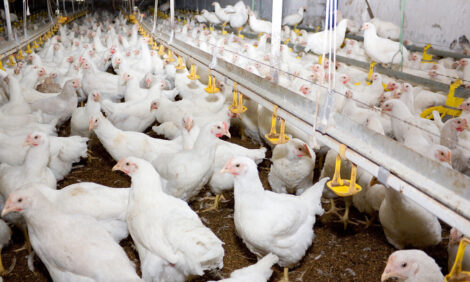



Weak Code Wont Tackle Campylobacter
NEW ZEALAND - The New Zealand Food Safety Authority has missed a vital chance to stem this country's campylobacter-related epidemic, the Green Party says.The new Code of Practice for processing of poultry, while a small step in the right direction, fails to include some very simple measures to stem the tide of campylobacter contamination of chicken meat being sold to New Zealanders, Safe Food Spokesperson Sue Kedgley says.
* "Campylobacter is a nasty food-borne illness that is estimated to affect around 100,000 New Zealanders each year" |
|
Safe Food Spokesperson Sue Kedgley
|
"Campylobacter is a nasty food-borne illness that is estimated to affect around 100,000 New Zealanders each year, and sees about 650 people hospitalised. Estimates are that around 80 percent of cases stem from contaminated chicken.
The Authority's own studies show that campylobacter cross-contamination is occurring at virtually all stages of poultry processing and sale, yet the simple steps that can be taken to prevent this have barely been addressed in the new Code of Practice. "A higher emphasis should be placed on more hygienic methods of transportation to avoid cross-contamination between live birds.
Campylobacter lives in the gut of the chicken and transporting them in cages stacked on top of each other will inevitably result in the droppings from birds higher up the stack contaminating those below them."
Studies show that automated processing systems pose a far higher risk of contamination than manual systems, however, the code has asked for little modification of these processes.
The spray caused by the rubber fingers of the automatic defeatherer is a major source of contamination from one bird to the next, as is the automatic evisceration machine. This machine pulls the gut from the bird, however, if not set to the correct size can tear the gut spilling the contents over the chicken and contaminating the machine.
"Finally, in the retail environment leaky packing allows contamination of other grocery items. If leak-proof packaging was mandatory, New Zealanders could be sure their entire trolley hadn't got a dose of campylobacter from a pack of fresh chicken meat.
"I can not understand why the NZFSA would allow these processes to continue in this way. It is time for the Authority to take a hard line instead of the softly, softly approach it has followed so far. The health of many New Zealanders is at stake," Ms Kedgley says.
Further Reading
|
|
- Find out more information on Campylobacter by clicking here. |








